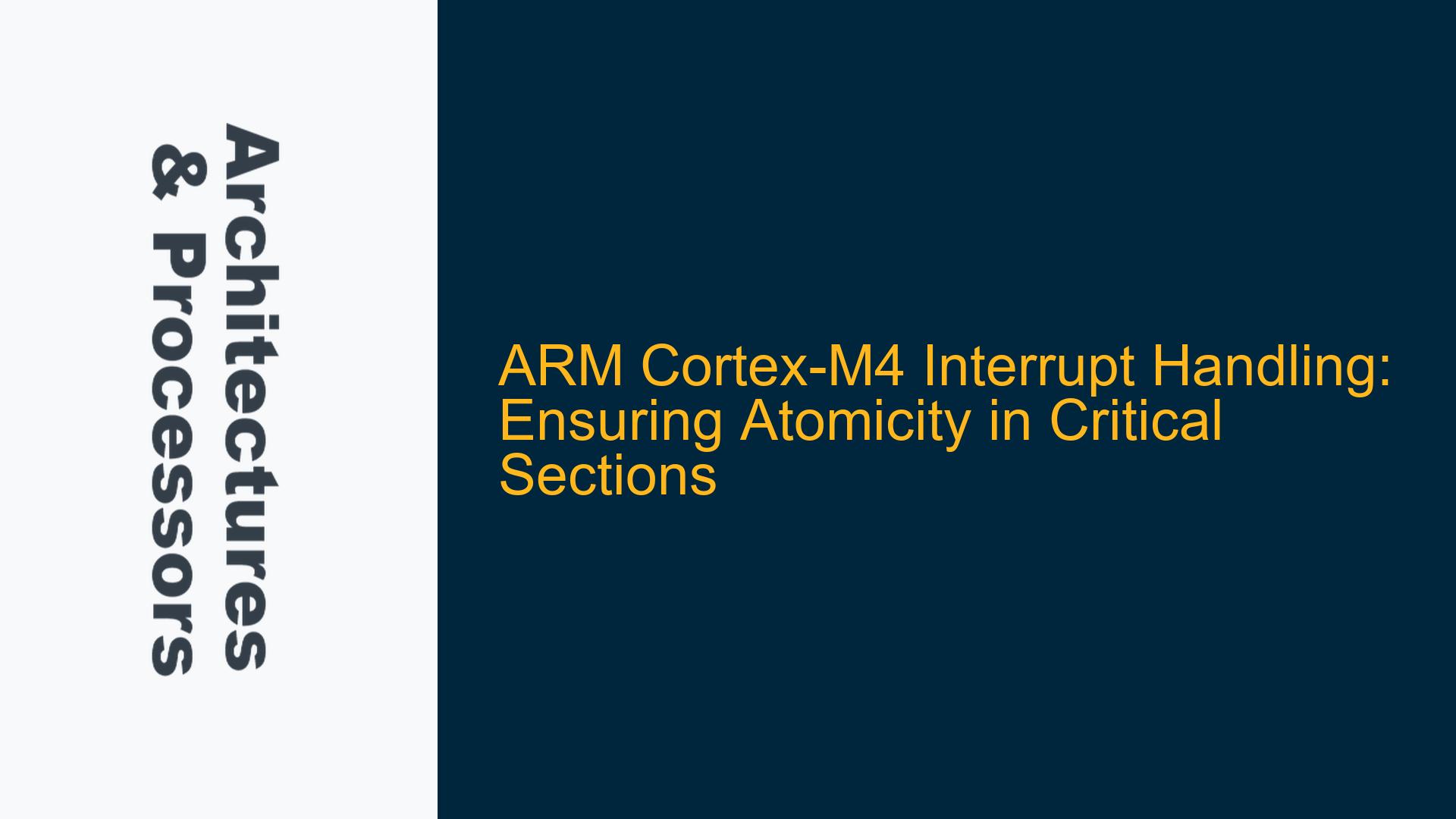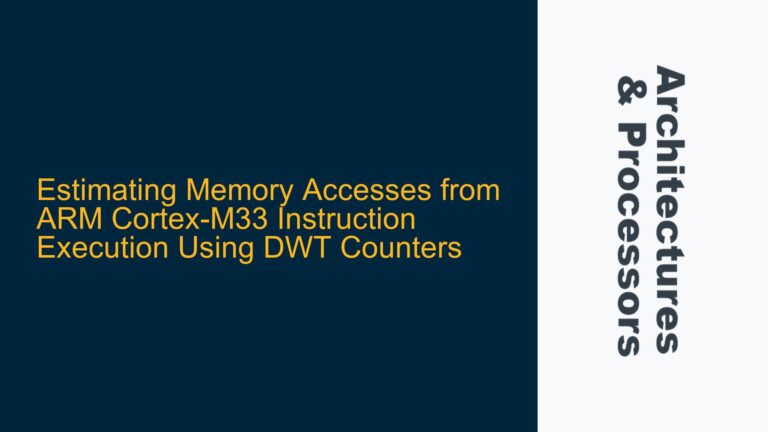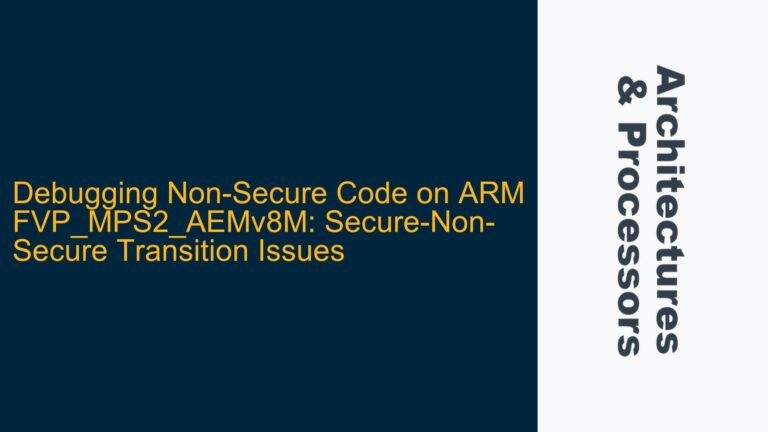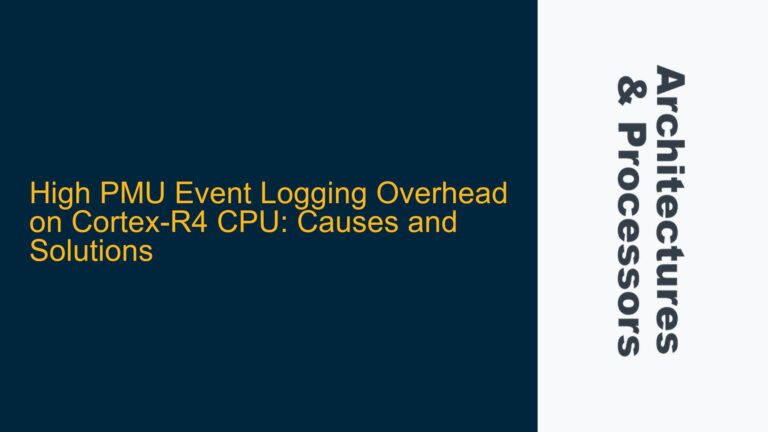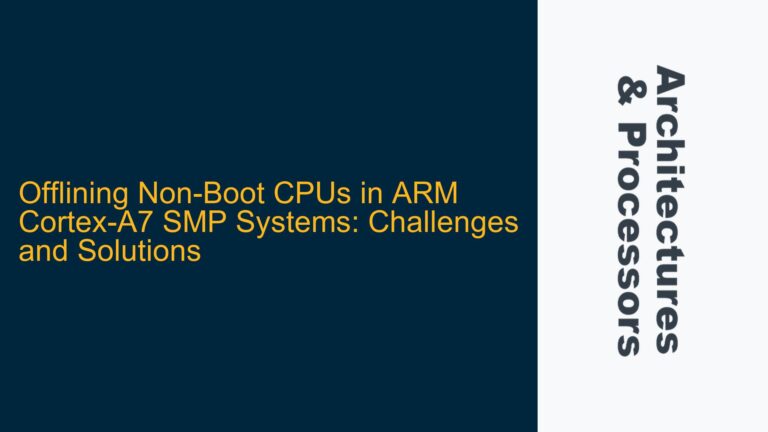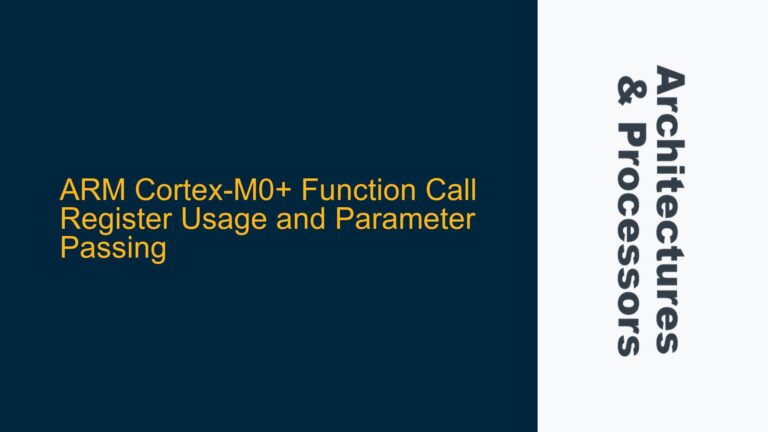ARM Cortex-M4 Interrupt Handling and Critical Section Protection
In embedded systems, particularly those utilizing ARM Cortex-M4 processors, managing interrupts effectively is crucial for ensuring system reliability and performance. The Cortex-M4, being a member of the ARM Cortex-M family, is widely used in real-time applications where deterministic behavior is essential. One common scenario involves the need to protect critical sections of code from being preempted by interrupts. This is typically achieved by disabling global interrupts using the CPSID I instruction, which sets the PRIMASK register to disable all interrupts except for non-maskable interrupts (NMIs) and hard faults.
However, a question arises: Is it necessary to include a Data Synchronization Barrier (DSB) or Instruction Synchronization Barrier (ISB) after disabling interrupts to ensure that no preemption occurs during the execution of a critical section? This question is particularly relevant in high-interrupt-load environments, such as those found in automotive or industrial control systems, where the timing and atomicity of operations are critical.
The Cortex-M4 processor, like other ARM Cortex-M processors, employs a pipelined architecture that can fetch and decode instructions ahead of their execution. This pipelining can lead to situations where an interrupt is recognized and its corresponding ISR is fetched and decoded before the CPSID I instruction takes effect. If this happens, the ISR could preempt the critical section, leading to potential race conditions or data corruption.
To address this concern, it is important to understand the behavior of the Cortex-M4 pipeline and the role of memory barriers in ensuring the correct ordering of instructions. The DSB instruction ensures that all memory accesses are completed before the next instruction is executed, while the ISB instruction flushes the pipeline and ensures that all previous instructions are completed before new instructions are fetched. These barriers are typically used in scenarios where the order of memory accesses or instruction execution is critical, such as when modifying memory-mapped peripheral registers or when switching contexts.
In the context of disabling interrupts, the use of DSB or ISB after CPSID I is not strictly necessary. The ARM architecture guarantees that the CPSID I instruction will take effect immediately, preventing any further interrupts from being recognized until the PRIMASK register is cleared. This means that once CPSID I is executed, no new interrupts will be fetched or decoded, and the processor will continue executing the critical section without interruption.
However, there are scenarios where the use of DSB or ISB might be beneficial. For example, if the critical section involves modifying memory-mapped peripheral registers that require strict ordering of accesses, a DSB might be necessary to ensure that all previous memory accesses are completed before the critical section begins. Similarly, if the critical section involves switching contexts or modifying the control flow, an ISB might be necessary to ensure that the pipeline is flushed and the new context is correctly established.
In summary, while the use of DSB or ISB after CPSID I is not required for basic interrupt disabling, it can be beneficial in specific scenarios where the ordering of memory accesses or instruction execution is critical. Understanding the behavior of the Cortex-M4 pipeline and the role of memory barriers is essential for ensuring the correct and reliable operation of embedded systems.
Pipeline Behavior and Interrupt Fetching in Cortex-M4
The ARM Cortex-M4 processor employs a three-stage pipeline consisting of fetch, decode, and execute stages. This pipelining allows the processor to achieve higher performance by overlapping the execution of multiple instructions. However, this also introduces complexities in handling interrupts, particularly in ensuring that critical sections of code are executed atomically.
When an interrupt occurs, the processor must first fetch the corresponding ISR from memory. This fetch operation can occur concurrently with the execution of other instructions, including those that disable interrupts. If an interrupt is recognized and its ISR is fetched before the CPSID I instruction takes effect, the ISR could preempt the critical section, leading to potential race conditions or data corruption.
To prevent this, the ARM architecture includes mechanisms to ensure that the CPSID I instruction takes effect immediately, preventing any further interrupts from being recognized until the PRIMASK register is cleared. This means that once CPSID I is executed, no new interrupts will be fetched or decoded, and the processor will continue executing the critical section without interruption.
However, the pipelining behavior of the Cortex-M4 can still lead to situations where an interrupt is recognized and its ISR is fetched before the CPSID I instruction takes effect. In such cases, the use of a DSB or ISB instruction after CPSID I can help ensure that the critical section is executed atomically.
The DSB instruction ensures that all memory accesses are completed before the next instruction is executed. This can be useful in scenarios where the critical section involves modifying memory-mapped peripheral registers that require strict ordering of accesses. By inserting a DSB after CPSID I, the programmer can ensure that all previous memory accesses are completed before the critical section begins, preventing any potential race conditions.
Similarly, the ISB instruction flushes the pipeline and ensures that all previous instructions are completed before new instructions are fetched. This can be useful in scenarios where the critical section involves switching contexts or modifying the control flow. By inserting an ISB after CPSID I, the programmer can ensure that the pipeline is flushed and the new context is correctly established, preventing any potential issues with instruction fetching or execution.
In summary, while the ARM architecture guarantees that the CPSID I instruction will take effect immediately, the pipelining behavior of the Cortex-M4 can still lead to situations where an interrupt is recognized and its ISR is fetched before the critical section begins. In such cases, the use of DSB or ISB instructions can help ensure that the critical section is executed atomically, preventing any potential race conditions or data corruption.
Implementing Critical Sections with CPSID I and Memory Barriers
Implementing critical sections in ARM Cortex-M4 processors requires a careful understanding of the processor’s interrupt handling mechanisms and the role of memory barriers in ensuring atomicity. The CPSID I instruction is the primary mechanism for disabling interrupts, but the use of memory barriers such as DSB and ISB can provide additional guarantees in specific scenarios.
When implementing a critical section, the first step is to disable interrupts using the CPSID I instruction. This sets the PRIMASK register to 1, preventing all interrupts except for NMIs and hard faults from being recognized. Once interrupts are disabled, the critical section can be executed without fear of preemption.
However, as discussed earlier, the pipelining behavior of the Cortex-M4 can lead to situations where an interrupt is recognized and its ISR is fetched before the CPSID I instruction takes effect. To prevent this, the programmer can insert a DSB or ISB instruction after CPSID I to ensure that the critical section is executed atomically.
The DSB instruction ensures that all memory accesses are completed before the next instruction is executed. This can be particularly useful in scenarios where the critical section involves modifying memory-mapped peripheral registers that require strict ordering of accesses. For example, consider a scenario where the critical section involves writing to a peripheral register that controls a hardware timer. If the write operation is not completed before the critical section begins, the timer might not be configured correctly, leading to incorrect behavior.
By inserting a DSB after CPSID I, the programmer can ensure that all previous memory accesses are completed before the critical section begins. This prevents any potential race conditions or data corruption that might arise from incomplete memory accesses.
Similarly, the ISB instruction flushes the pipeline and ensures that all previous instructions are completed before new instructions are fetched. This can be useful in scenarios where the critical section involves switching contexts or modifying the control flow. For example, consider a scenario where the critical section involves modifying the stack pointer or switching to a different task. If the pipeline is not flushed before the critical section begins, the processor might continue executing instructions from the old context, leading to incorrect behavior.
By inserting an ISB after CPSID I, the programmer can ensure that the pipeline is flushed and the new context is correctly established. This prevents any potential issues with instruction fetching or execution that might arise from an inconsistent pipeline state.
In summary, implementing critical sections in ARM Cortex-M4 processors requires a careful understanding of the processor’s interrupt handling mechanisms and the role of memory barriers in ensuring atomicity. While the CPSID I instruction is the primary mechanism for disabling interrupts, the use of DSB or ISB instructions can provide additional guarantees in specific scenarios. By carefully considering the requirements of the critical section and the behavior of the Cortex-M4 pipeline, programmers can ensure that their code is executed atomically and reliably.
